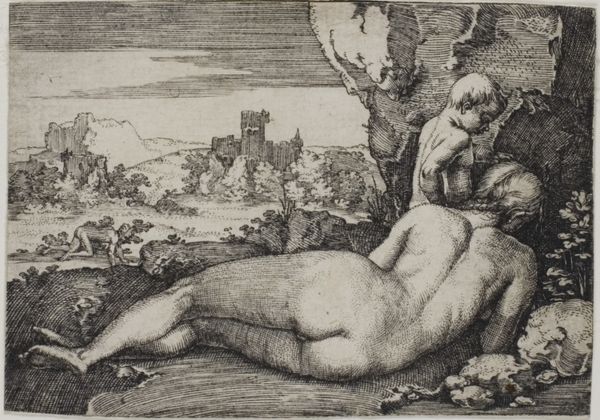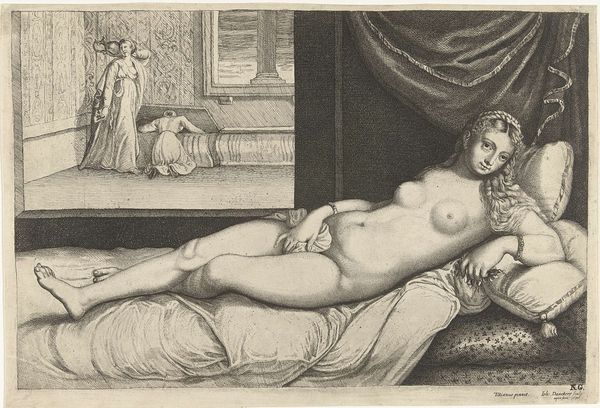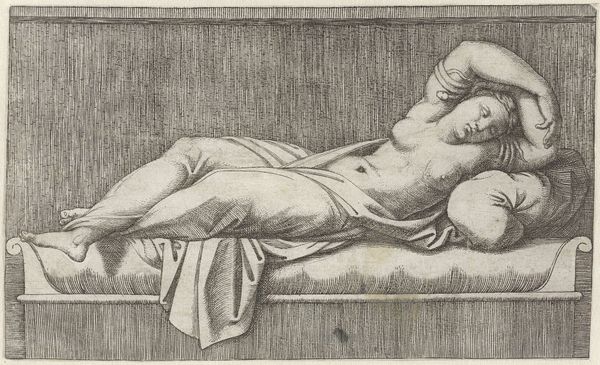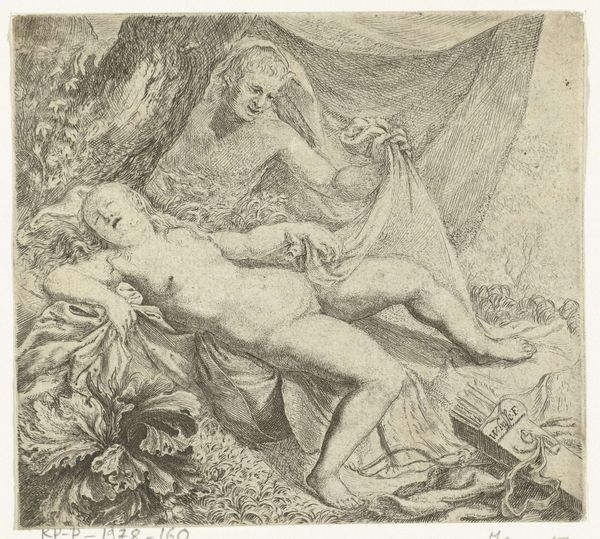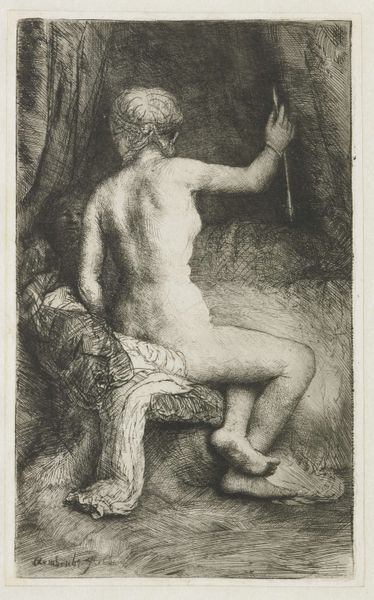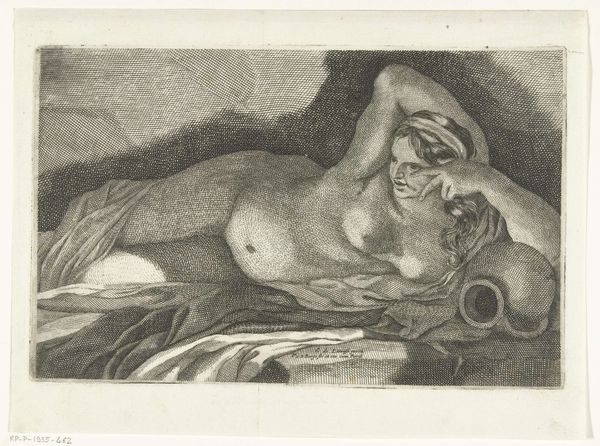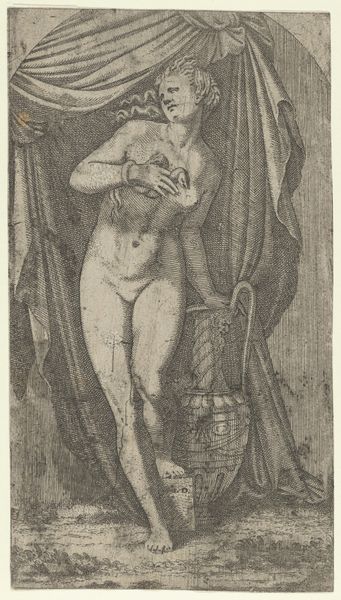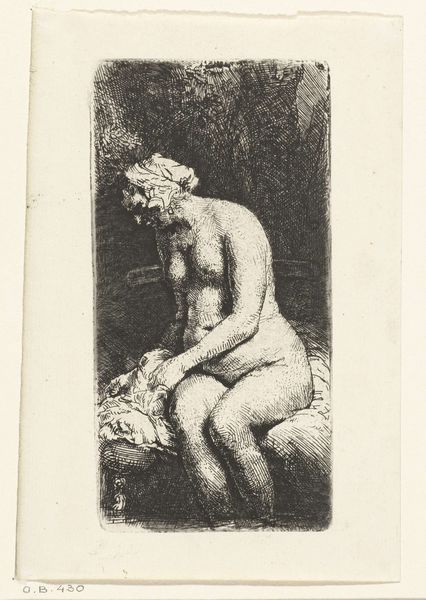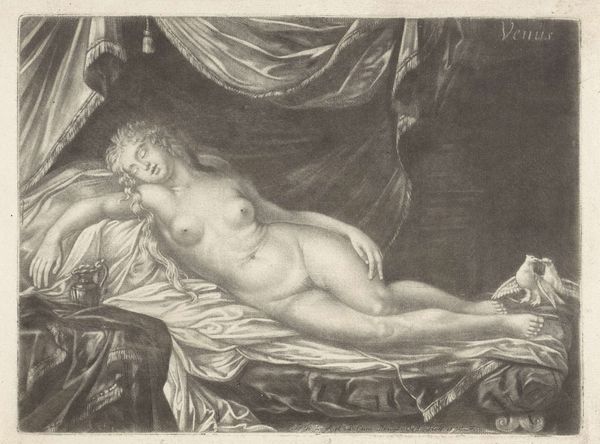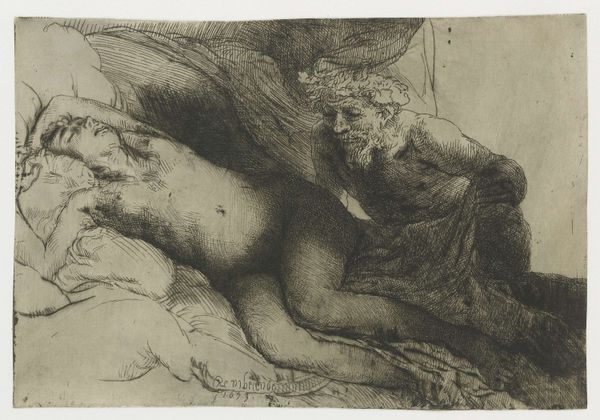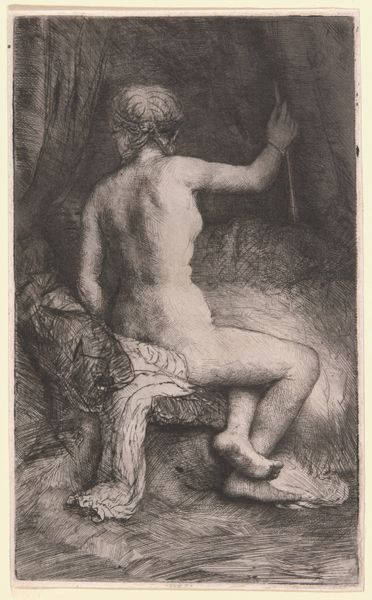
drawing, print, paper, engraving
#
drawing
# print
#
landscape
#
figuration
#
paper
#
italian-renaissance
#
nude
#
italy
#
engraving
Dimensions: 119 × 182 mm (sheet)
Copyright: Public Domain
Editor: So, here we have Giulio Campagnola's "Woman Reclining in a Landscape," an engraving from around 1508 to 1509. It's a really delicate image. What strikes me is this contrast between the woman’s relaxed pose and this quite imposing, almost fortified-looking building in the background. How do you interpret this juxtaposition? Curator: It's a powerful visual statement, isn't it? Campagnola, working in Renaissance Italy, taps into complex social and political dynamics. Think about the male gaze, power structures, and idealized beauty standards of that era. This woman's nudity, juxtaposed against a landscape that includes signs of wealth and dominance, raises questions about female agency and the objectification of women. Editor: So, the landscape isn't just a backdrop; it's actually part of the message? Curator: Absolutely. Consider the tradition of the pastoral landscape. It's often associated with idealized, often eroticized, views of the female body and themes of pleasure. But is it *her* pleasure? Does she truly occupy this space or is she merely placed there? What does that say about a society where wealth and power often dictated the terms of representation? Also, think about whose body is valorized here. Are we really seeing the lives of everyday women represented in these idealized settings? Editor: That makes me see the image so differently. I was just seeing a beautiful nude, but there’s so much more happening under the surface. Curator: Exactly. We can ask, whose perspectives are missing? This is where art history meets contemporary feminist theory. Editor: It's fascinating to consider these power dynamics at play even in such an idyllic-seeming scene. Thank you, I never thought of landscape carrying meaning beyond scenery, or of linking visual depictions to the history of representation of women. Curator: That's the beauty of art; it reflects the social tensions that define their cultural production and historical moment. It really emphasizes that no piece exists in a vacuum.
Comments
No comments
Be the first to comment and join the conversation on the ultimate creative platform.
